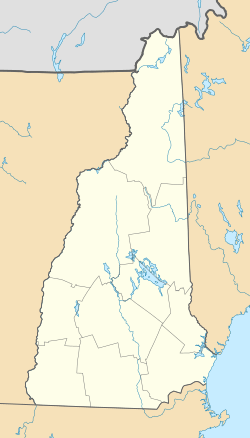Rochester Commercial and Industrial District facts for kids
Quick facts for kids |
|
|
Rochester Commercial and Industrial District
|
|

Mill complex along the Cocheco River in Rochester
|
|
| Location | N. Main, Wakefield, Hanson, S. Main Sts. and Central Square, Rochester, New Hampshire |
|---|---|
| Area | 6 acres (2.4 ha) |
| Architectural style | Late 19th And 20th Century Revivals, Late Victorian, Early Commercial |
| NRHP reference No. | 83001154 |
| Added to NRHP | April 8, 1983 |
The Rochester Commercial and Industrial District is a special area in Rochester, New Hampshire. It's like the city's main hub for businesses, factories, and important public buildings. This area is about 6 acres big. It includes many buildings that show how Rochester grew over time. You'll find old shops, government buildings, and factories here. The district was added to the National Register of Historic Places in 1983. This means it's an important place to protect because of its history.
Contents
Rochester's Early Days and Growth
Rochester became a town way back in 1722. But not many people lived there until the mid-1700s. This was after conflicts with Native American groups became less frequent. The town was a busy place for trading wood. It also became a key spot for travel. Two main stagecoach routes met at what is now Central Square.
How Rochester Became a Center for Industry
In the 1800s, Rochester grew into a major center. It became famous for making textiles (like cloth) and shoes. By the end of the 19th century, New Hampshire was well-known across the country for its shoe factories. Rochester played a big part in this. From 1797 to 1840, it was even the county seat for Strafford County. This meant it was the main government center for the area.
The Arrival of the Railroad
In 1849, the railroad came to Rochester. This made the city even more important for transportation. Goods and people could travel in and out more easily. This helped Rochester's businesses and factories grow even more.
What You See in Downtown Rochester Today
Most of downtown Rochester looks the way it does because of buildings built in the late 1800s and early 1900s. However, you can still find some older buildings from its earlier days.
Historic Buildings in Central Square
On North Main Street, you can see a few homes and shops from the 1820s. These older buildings are mixed in with newer ones. Central Square is where North Main, South Main, and Wakefield Streets meet. This area is surrounded by brick buildings from the late 1800s and early 1900s. These were mostly used for businesses.
Important Public and Factory Buildings
Along Main Street, you'll also find important public buildings. These include a courthouse, the city hall, and churches. These buildings show the city's history and how it was organized. Rochester's past as a factory town is still visible. For example, the four-story factory building of E.W. Wallace is at 100 South Main Street. This was a major shoe factory in the 1800s.



